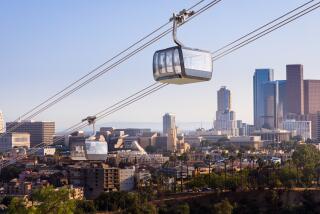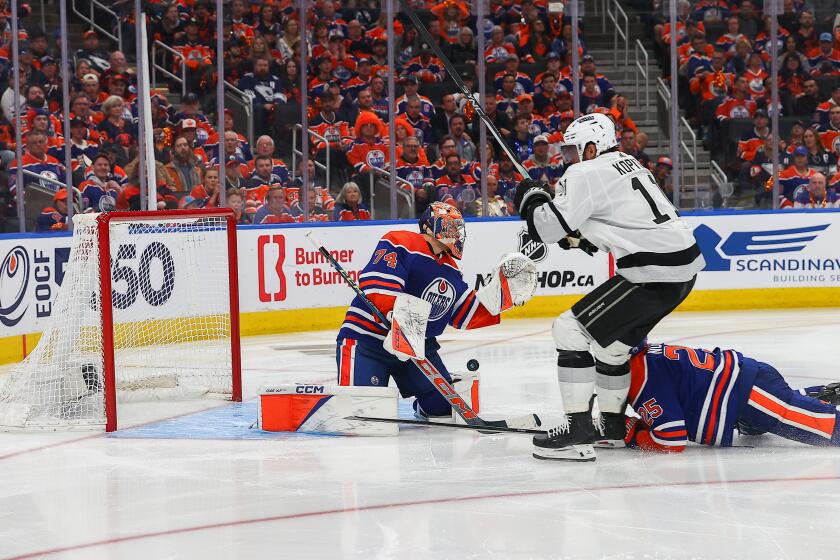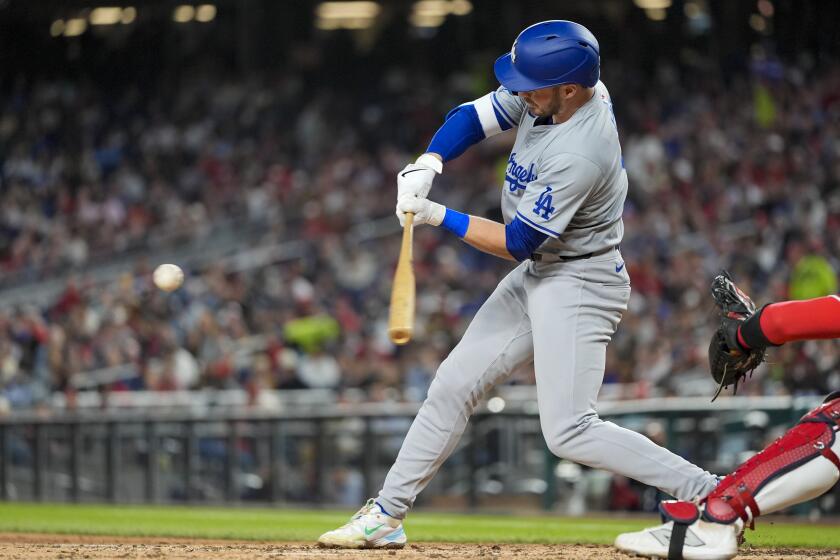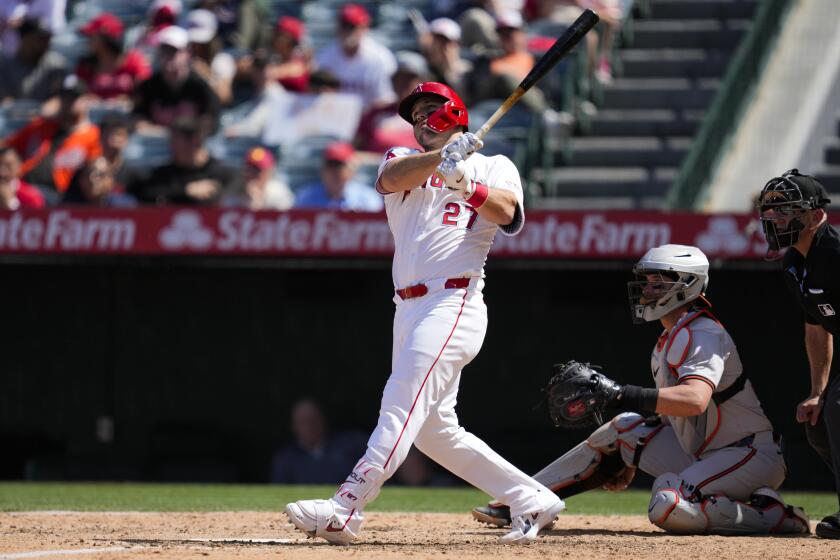NFL stadium in Chavez Ravine? Well, we can dream
An NFL stadium at Chavez Ravine?
You can bet the new owners of the Dodgers will at least kick the tires on that idea. In fact, a league insider said the buyers had preliminary discussions with the NFL while doing their due diligence on the investment.
Peter O’Malley did more than that in the late 1990s. He was well down the road on a proposal to build a football stadium next to Dodger Stadium when the city let the air out of his balloon by supporting the Coliseum, which it partly owned. Had politicians backed O’Malley, we would have had at least one team, and probably two, playing in a hilltop stadium for the last decade.
Frank McCourt tried to float a plan to the NFL too, but the project nicknamed “Five Ton Gorilla” — a football stadium and retail complex — never got off the ground.
So it stands to reason that the group paying $2.15 billion for the Dodgers will explore the idea of plunging into the stadium derby, a puzzle no one has solved for the last 17 years. After all, Magic Johnson, the most recognizable member of the new ownership group, has for years talked about his desire to bring the NFL back to L.A.
But even if there’s ample land for another stadium and parking on the Dodger Stadium site — and we know it’s a prime location in the eyes of the NFL — it could take years to untangle the traffic, neighborhood, entitlement, environmental and political issues involved with such a proposal.
There’s one big change since the days of O’Malley’s concept 15 years ago: The Coliseum is out of the game now that USC has the right of first refusal on the NFL. As a result, there can be an honest competition in the city, rather than politicians’ being obligated to back that crumbling venue.
Currently, there are two competing NFL proposals — downtown and in City of Industry — and neither is ideal from the league’s perspective. That’s not to say the league will pass on both of them, but it has always taken a “the more the merrier” approach to L.A.-area proposals, and NFL Commissioner Roger Goodell said this week: “We’ve often said that that’s an extraordinary stadium site up at Dodger Stadium.”
Some people have suggested constructing a football stadium where Dodger Stadium now sits, and putting a more intimate ballpark downtown, across from L.A. Live, where AEG is proposing a football stadium.
If only the process were so easy. First, if you think parking and traffic would be bad for 10 football games a season, mostly on Sundays, imagine what a snarl it would be for 81 home baseball games on all days of the week. And so much for AEG’s idea about attracting all sorts of new conventions that could work around the Sunday football games. That wouldn’t work with baseball.
What’s more, it’s hard enough to build one stadium in California, let alone two.
As it stands, AEG is putting the finishing touches on its 13,000-page environmental impact report for the downtown stadium and Convention Center upgrade, and hopes to have the public-comments phase of the process wrapped up by this summer.
That doesn’t mean an NFL team is on its way, though. Even if you believe the site is big enough and there are workable solutions for the traffic, parking and cost of the development, there are still some major hurdles to getting that deal done.
First, billionaire Philip Anschutz wants a large piece of a team at a deep discount, and that isn’t likely to happen. It’s even less likely now that NFL owners know the Dodgers commanded $2.15 billion.
If that’s strike one, then strike two is the financial model that AEG is proposing, in which the corporation — not the NFL owner — would handle the marketing of the team, relationships with suite and club-seat customers, naming-rights deals and the like. NFL owners call that “asset stripping,” and it diminishes much of the clout of owning a team. Those owners don’t like giving up that power.
Then again, with the downtown deal, it’s not the team that would pay for the stadium. AEG would pay for it, with the help of the league and the city.
As for the Industry proposal, the stadium would be paid for by the team and league, and the contribution of developer Ed Roski would be the 600 acres on which the venue and parking would sit. All that land is appealing to the NFL, as is the fact that Roski isn’t looking for a discount on a team and would be satisfied with a small slice at market value.
The biggest knock on the Industry plan is the location. Even though there are a lot of NFL stadiums that are not in city centers — the homes of the Cowboys, Redskins and Patriots among them — the league is always going to exhaust any downtown possibilities before looking to the outskirts of town.
And that’s where Dodger Stadium could come back into play. It would not be the fastest process, exploring the viability of that option, but if the NFL has shown anything over this almost-two-decade vacancy, it’s that it won’t be rushed.
The new Dodgers owners must feel like the dog that finally caught the truck. They have their hands full with resurrecting a proud franchise. They need to focus on their core asset before trying to bite off something as big as bringing an NFL team back to L.A., especially when there are already two viable groups.
Rebuilding the Dodgers means dealing with an aging venue, improving the product on the field and repairing all the damage that has been done with the fan base. That is going to require time, money and energy. The NFL shouldn’t be their first priority, and there is no indication that it is.
The ideal NFL answer could be Roski’s deal, Anschutz’s financing and the Dodgers’ location.
The right location, stadium and deal are essential components to the NFL’s return. But those aren’t the only factors. In all likelihood, the first boulder in this avalanche will not be an L.A. stadium backer saying, “We can get it done here!” It will be an existing NFL owner saying, “I can’t get it done here.”
twitter.com/LATimesfarmer
More to Read
Get our high school sports newsletter
Prep Rally is devoted to the SoCal high school sports experience, bringing you scores, stories and a behind-the-scenes look at what makes prep sports so popular.
You may occasionally receive promotional content from the Los Angeles Times.






